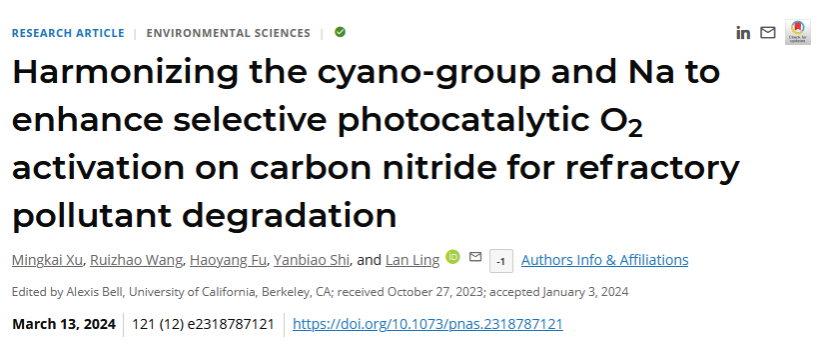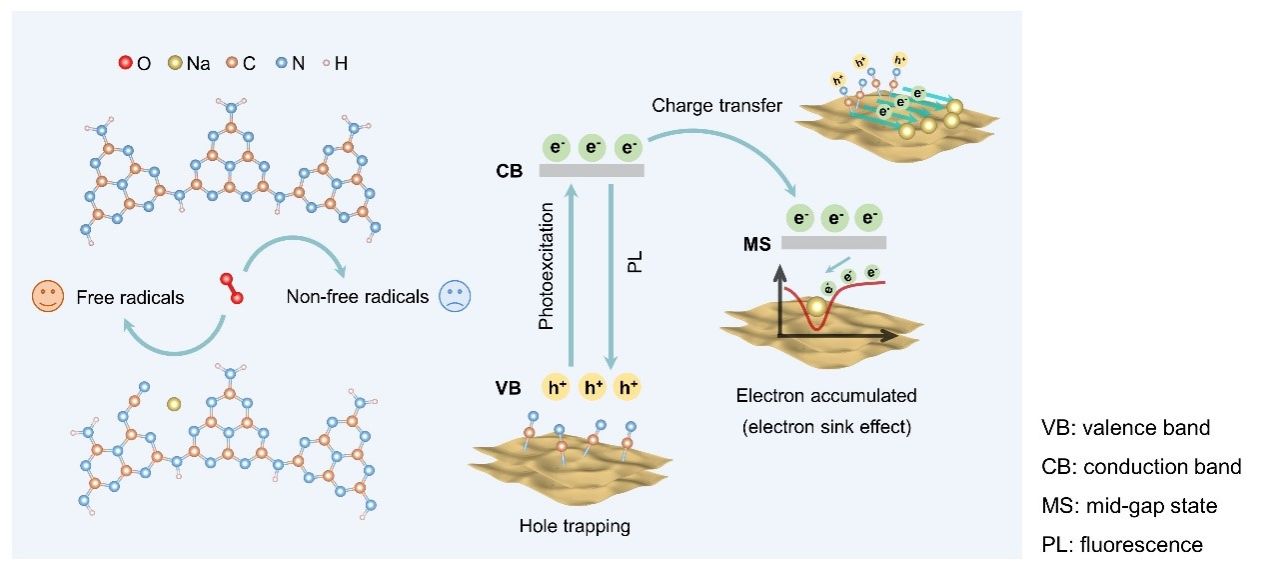
On March 13, 2024, the journal Proceedings of the National Academy of Sciences of the United States of America (PNAS) published an article online titled "Harmonizing Cyano-group and Na to Enhance Selective Photocatalytic O₂ Activation on Carbon Nitride for Refractory Pollutant Degradation" by Prof. Lan Ling's team. Prof. Lan Ling is the sole corresponding author, while PhD student Mingkai Xu is the sole first author. The collaborative authors include Ruizhao Wang, an undergraduate alumnus, Haoyang Fu, a PhD alumnus, and Yanbiao Shi, a postdoctoral researcher at Shanghai Jiao Tong University.

This study presents an innovative modification strategy that simultaneously regulates excitonic effects and photogenerated charge carrier recombination processes, significantly enhancing the pathway selectivity for oxygen activation in 2D materials. Using graphitic carbon nitride (CN) as the model, the researchers prepared a modified material (CN-Cy-Na) by introducing cyano groups and sodium ions via a molten salt treatment.This study finds that the cyano groups increase the local charge density of CN, promoting exciton dissociation by attracting holes. The dissociated holes are captured by cyano groups, while electrons undergo rapid migration under the synergistic enhancement of an internal electric field created by cyano groups and Na ions. Sodium ions substantially enhance the electron-trapping effect of CN, creating localized potential wells to capture rapidly migrating electrons for subsequent O₂ activation reactions. Sodium ions also facilitate O₂ adsorption and improve charge transfer between the catalyst and O₂.
As a result, CN-Cy-Na achieves an impressive 97.6% selectivity for free radicals and demonstrates excellent pollutant removal performance for antibiotics, plasticizers, pesticides, and other contaminants.

This research offers a detailed analysis of photogenerated charge carrier separation and migration pathways, emphasizing the significance of selectivity in oxygen activation for environmental remediation. It provides a novel approach to pollution control, addressing the low pollutant mineralization rates associated with traditional water treatment methods. The work was supported by National Outstanding Youth Science Fund Project of the National Natural Science Foundation of China and National Natural Science Foundation of China.
Article link: https://doi.org/10.1073/pnas.2318787121